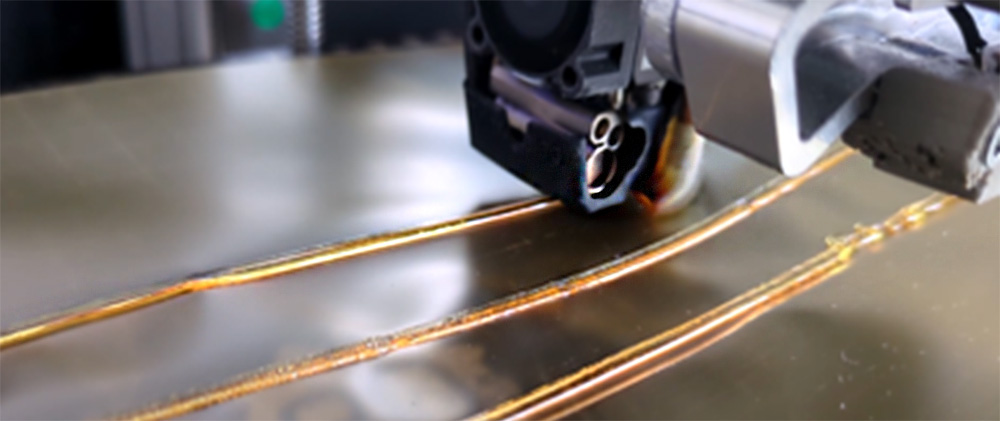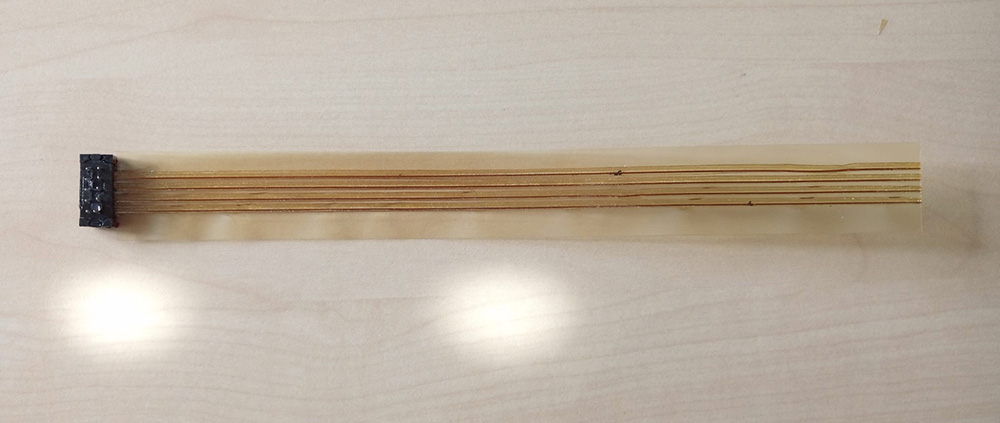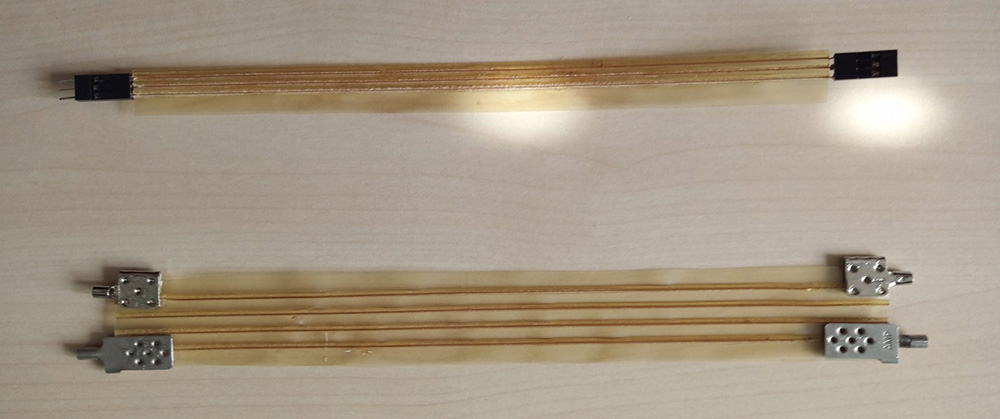
Sustainable, flexible conductor technology

Challenge
Flexible conductor technology offers many advantages over conventional cables. For this reason, the application areas of Flex-PCBs and flexible flat cables (FFC) are continuously expanding. Both technologies facilitate assembly, reduce space requirements, and increase the achievable complexity of circuits. However, their manufacturing involves complex process technology and chemicals. Sustainable recycling strategies do not yet exist. Therefore, we are focusing on reducing the materials needed for flexible wiring harnesses to combine their functionality with the environmental compatibility of standard cable.
Solution
To achieve a significant reduction in the raw materials used, new manufacturing processes must be considered. The WEAM process offers the possibility of producing a flexible wiring harness using a single-material system made of flexible film and thermoplastic adhesion layer. This harness consists only of a conductor such as copper or aluminum and an application-optimized polymer like PET or PI. Without the use of adhesion promoters or solvents, these wiring harnesses can be separated cleanly by granulating and sorting, just like other cables.
 Fraunhofer Institute for Machine Tools and Forming Technology
Fraunhofer Institute for Machine Tools and Forming Technology

